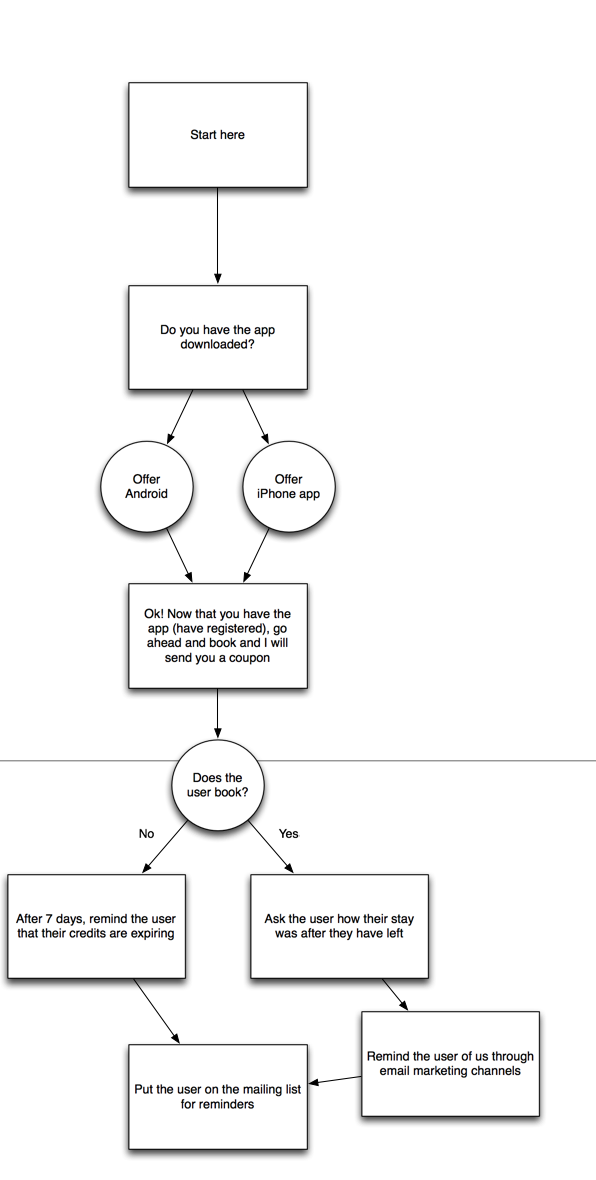When you get stuck into marketing for your business you’ll soon come across ‘experts’ who want to sell you the latest tool that’s going to accelerate your growth. But it often doesn’t work. Why, because it’s not designed to work from the bottom up as a ‘system’ that fits in with the way you do business.
That may sound a tad academic but take this example from Christopher S. Penn, on the problems with just taking the software (in this case Google Analytics) as it comes out of the box and failing to figure out how it can make a real difference to your business.
Earlier this week, I was doing some private consulting and found a Google Analytics installation that was almost out of the box. No meaningful goals set up, no social media settings, no content groupings, none of the good stuff that makes Google Analytics an incredibly powerful tool.
This aligns with my experiences at work, seeing clients with badly implemented Google Analytics accounts, seeing companies leaving piles and piles of money on the table every day.
How do you rescue yourself from this quagmire? How do you pick up the money that you know is waiting there in front of you?
Do.
Pick something and do it. Take all the metrics and analytics available to you, pick one thing, and do that. My friend Julien Smith wrote about this recently in something he calls the 8% rule. Pick one thing and grow it 8% every week.
Read this excellent post he wrote about it:
What Christopher means of course is that ‘Pick something and do it” growth hacker approach is itself a ‘system’. To do it well you’ve got to be systematic about it. The example he gives from his friend Julien Smith, founder of office space booking service Breather, is a great story about how you create a system out of nothing:

A simple **system** for building traction
It first started to turn right as my sense of desperation deepened. I started offering free hours on Twitter — to literally anyone. I didn’t care if I was desperate. I was going to get 8% hours a week, and because of my prior successful weeks, it was getting harder and harder to succeed at doing this. I hadn’t failed once yet, and I wasn’t going to start now!
Miraculously, the idea of actually giving hours away on Twitter actually started really working. People were like, “Wow! What’s this new service?” I gave them directions to download the app, which they did. I gave them free hours. Then, some of them booked. All of these people were strangers, and even crazier, some of them actually liked it! Some even came back!
At this point, with evidence of people liking our service and the method working, I started hitting this angle hard. The flowchart you see to the left is what I built. I started from scratch, but over time, it became a machine.
That’s all well and good but what I’m interested to find out is some practical examples from UK businesses, where they have taken an explicitly systematic approach to growing their business. Here’s a selection after posting on Twitter using the #journorequest hashtag:
Blossoming Gifts: assessing ROI by checking demand (revenue) vs implementation (cost)
At Blossoming Gifts, we have always adopted a systematic approach to new projects by analysing each one on a return on investment standpoint.We will begin by looking at potential projects before ascertaining the search volume and demand for these products across all channels.
We then compare this to the implementation costs whilst applying sensitivities to not gaining as much revenue as desired.
With this, we have been able to assess which are the better projects to pursue based on return on investment, whether this is geographical or product based projects.
Tutora: finding a formula for expansion
We were systematic in everything we did. When we first launched Tutora, we did so on a city by city basis, starting with our hometown of Sheffield. We operate as a marketplace, so the more tutors we have in a city, the more parents and students we get, so building critical mass in one city is more important than nationwide coverage. Once we have reached scale in one city, we would move onto the next one. We did this until we had a solid presence in every major city across the UK.We spent a long time trying to figure out the best way to get customers to try out our service – we knew we had built something that parents would understand and appreciate, but the web is a lonely place when you are new. We tried everything to start with: hand delivering flyers, stalls at parents evenings, adverts in local papers etc. We made sure we tracked where every lead came from (which wasn’t a big job to start with) and soon figured out that we had two marketing channels that were working – Google Advertising and online classifieds.
Pretty soon we had a formula for expansion that was working terrifically. Spend a month or two building a base of good tutors in a city, then start advertising in that city through Google and Gumtree. We were doubling our sales every month, and pretty soon our tutors were conducting £50,000 of lessons every month.
PS: I really like creating systems because I understand how powerful they can be in helping businesses get to where they want to get. Please get in touch if you want to discuss how simple systematic approach can power your business.
[ninja_form id=1]



